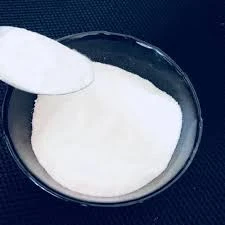
Dec . 21, 2024 18:21 Back to list
HPMC Solubility Characteristics in Various Organic Solvent Environments for Enhanced Applications
Understanding the Solubility of HPMC in Organic Solvents
Hydroxypropyl methylcellulose (HPMC) is a versatile and widely used cellulose ether in various industries, including pharmaceuticals, food, and construction. Its unique chemical properties and functional characteristics make it an essential ingredient in many formulations. One of the critical considerations in working with HPMC is its solubility in different solvents, particularly organic solvents. This article explores the solubility of HPMC in organic solvents, the factors influencing solubility, and the implications for its applications.
What is HPMC?
HPMC is a modified cellulose derivative, produced by the etherification of cellulose with propylene oxide and methyl chloride. Its structure comprises a hydrophilic hydroxypropyl group and a hydrophobic methyl group, which bestows amphiphilic characteristics to the molecule. This property significantly affects HPMC's solubility profile. Due to these modifications, HPMC exhibits excellent film-forming ability, emulsification, and thickening properties, making it valuable for a wide range of applications.
Solubility in Organic Solvents
HPMC is primarily soluble in water and various polar solvents, but its behavior in organic solvents varies considerably. Generally, the solubility of HPMC in organic solvents is limited due to its hydroxyl groups being hydrophilic in nature. However, specific organic solvents can solubilize HPMC to a certain extent, which is crucial for product formulations in the pharmaceutical and cosmetic industries.
The primary factor influencing HPMC's solubility in organic solvents is the polarity of the solvent. Polar solvents such as methanol, ethanol, and acetone can dissolve HPMC to some degree because of their ability to interact with the hydroxyl groups of the polymer. However, non-polar solvents like hexane or toluene demonstrate minimal or no solubility for HPMC due to the lack of hydrogen bonding capability.
Factors Influencing Solubility
1. Molecular Weight The molecular weight of HPMC significantly impacts its solubility. Lower molecular weight HPMC tends to be more soluble in organic solvents compared to its higher molecular weight counterparts. This is likely because lower molecular weight polymers have fewer entanglements and can more easily interact with solvent molecules.
hpmc solubility in organic solvents

2. Degree of Substitute The degree of substitution (DS) of the hydroxypropyl and methyl groups also plays a crucial role in solubility. A higher DS generally enhances solubility in organic solvents by increasing the hydrophobic character of the molecule. Therefore, formulations using HPMC should consider the appropriate DS to optimize solubility according to specific application requirements.
3. Temperature Temperature can affect the solubility of HPMC in organic solvents. As the temperature increases, the kinetic energy of the molecules also increases, which can enhance the dissolution process. However, this effect may vary depending on the solvent used, necessitating careful consideration during formulation.
Applications and Implications
The solubility of HPMC in organic solvents holds significant implications for various applications. In the pharmaceutical industry, HPMC is widely used as a binder, film-forming agent, and controlled-release matrix in drug formulations. Its ability to dissolve in specific organic solvents allows for the preparation of solvent-based coatings and drug delivery systems.
In the food industry, HPMC acts as a thickening agent and stabilizer. Understanding its solubility profile in organic solvents can aid food scientists in optimizing formulations for sauces, dressings, and other products where emulsification and texture play a crucial role.
Moreover, in cosmetic formulations, HPMC's solubility enhances its usability as a thickener and stabilizer in creams and lotions. Knowledge of its solubility in various solvents can help formulators design products with desired textures and performance characteristics.
Conclusion
In summary, the solubility of HPMC in organic solvents is influenced by various factors, including solvent polarity, molecular weight, degree of substitution, and temperature. By understanding these factors, manufacturers can optimize formulations across a wide range of industries. Given the growing demand for innovative products, ongoing research into the solubility behavior of HPMC will play an essential role in developing effective and efficient formulations that meet specific regulatory and performance criteria.
-
Versatile Hpmc Uses in Different Industries
NewsJun.19,2025
-
Redispersible Powder's Role in Enhancing Durability of Construction Products
NewsJun.19,2025
-
Hydroxyethyl Cellulose Applications Driving Green Industrial Processes
NewsJun.19,2025
-
Exploring Different Redispersible Polymer Powder
NewsJun.19,2025
-
Choosing the Right Mortar Bonding Agent
NewsJun.19,2025
-
Applications and Significance of China Hpmc in Modern Industries
NewsJun.19,2025







